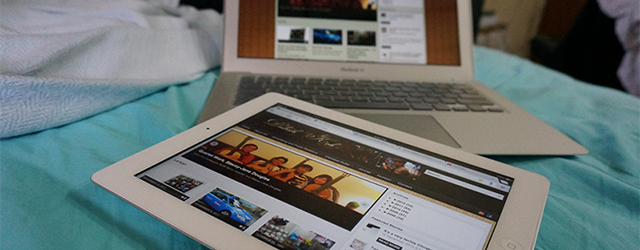Over the last 4 years I have worked closely with plenty of tertiary students. Whenever I meet with these students, they usually pull out a monstrosity of a laptop from their bags, and I’d be left wondering, “Why are students still using these chunky computers?”
When I was studying at Ngee Ann Polytechnic in 2002, I was part of the pioneering batch of students who were required to purchase and bring laptops to school. Back in those days, a mid range laptop was a 6-7 pound piece of machinery, with the uninspired power brick adding even more weight and girth.
Lugging that thing around was a real chore. To add insult to injury, we didn’t use it very often, which lead me to wonder why it was made compulsory to begin with. It struck me as being an unnecessary, bothersome purchase that only served to tire me as I heaved it everywhere I went.
10 years later, times have changed.Tertiary institutes are harnessing the power of technology in the learning process and there is a legitimate need for students to buy laptops. But advances in mobile computing have also made devices smaller, more powerful, and most importantly, easier to carry.
Over the last year, I have been using a MacBook Air and an iPad and have been left wondering why more students don’t use it. Both are considerably lighter than many of the laptops I see students using.
They are also quite affordable in their base configurations. At the time of this entry, the base price for a 11 inch MacBook Air is $1,348 while the base price on an iPad Mini is an incredibly low $448. You won’t be able to play resource-hungry games on these machines or run heavily multimedia applications like Adobe’s Creative Suite on it, but both options are great for taking notes, checking email and surfing the web to conduct research or pass the time.
Looking at the $2,000 some students spend on a laptop, I wonder why they don’t buy an iPad mini and use the rest of the money to buy or build a gaming desktop.

And make no mistake, the iPad is a very capable computing device. I use it to surf the web, check my email, make appointments on my calendar and read anything from music to the Straits Times to comic books on it. I even use my iPad in conjunction with an SD card reader to review photos taken with my Sony NEX 5R and edit them with iPhoto.
It is also very capable as note-taking tool. I am so comfortable typing on it, that the entirety of this editorial was written on my iPad.
With devices like these available to students, they have it easy. When I was in their shoes, I wished I had an iPad or a MacBook Air. Either would have saved me from a lot of shoulder and back pain. Nowadays I quietly nod in approval whenever I see a student using a MacBook Air or iPad and wonder why the others don’t follow suit.
